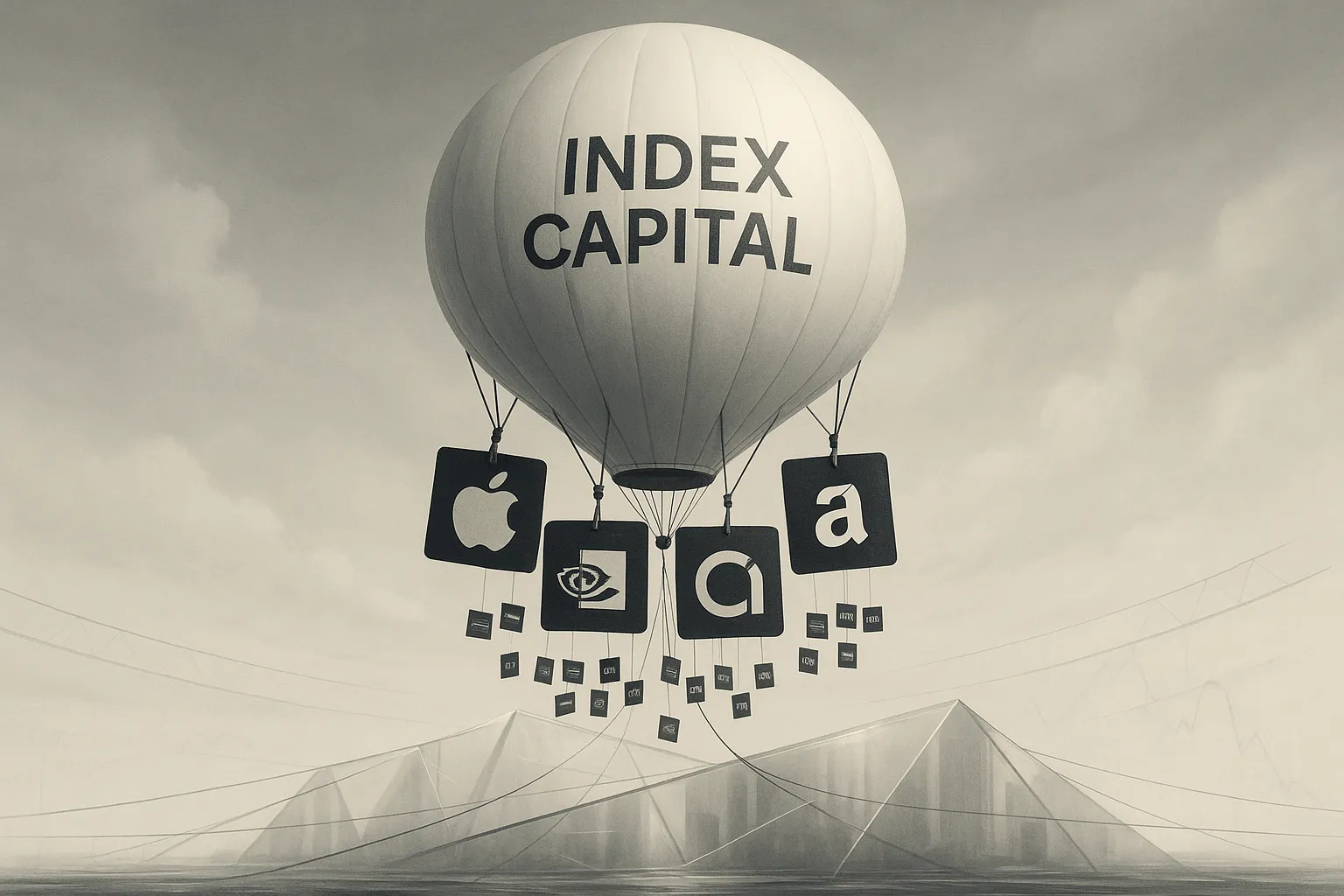Is Index Investing Fueling a Market Bubble?

Index investing has grown exponentially over the past two decades. According to Morningstar (2023), more than 55% of U.S. equity fund assets, at the end of 2023. For many investors, index funds offer a simple, low-fee path to diversification. But as trillions flow into these vehicles, one unintended side effect is surfacing: capital gets concentrated in the same market leaders.
Market-cap weighting—the structure behind most index funds—automatically allocates more capital to the largest companies. As these companies rise in price, they receive even more inflows, creating a feedback loop. This isn’t inherently irrational. But it raises a question: are passive strategies still passive if they’re reinforcing market trends instead of reflecting them?
Because index investors don't choose stocks, they may be unaware of just how concentrated their portfolios have become.
Key Takeaways
- Passive investing is concentrating capital in a handful of large-cap stocks, increasing systemic risk.
- The S&P 500’s top 10 stocks now account for over 37.3% of its total weight—an historic level of dominance.
- Market cap-weighted index funds may unintentionally amplify bubbles by investing more in already-expensive stocks.
- Many investors may be underestimating concentration risk, mistaking diversification for true exposure.
- Portfolio-level diversification requires more than owning a broad index—it requires assessing actual asset overlap and correlations.
Hypothetical: What Happens When the Leaders Stumble?
Imagine a hypothetical investor who holds a standard S&P 500 index fund in early 2022. As of July 16, 2025, the S&P 500’s five largest constituents—Nvidia, Microsoft, Apple, Amazon, and Meta—accounted for 27.1% of the index’s weight. When tech stocks corrected that year, the broad index fell sharply—even though hundreds of other companies were less affected.
This shows how index performance can be increasingly tied to a few names. In downturns, what feels diversified may not act that way.
A Bubble—or Just Efficient Capital Allocation?
Some analysts argue that this concentration isn’t a bubble—it’s simply the market pricing in technological dominance. Others are more cautious. A U.S. Treasury OFR report co-authored by Robert Shiller demonstrates how narrative-driven, mechanically sourced inflows can distort valuations and fuel mispricing.
This matters because market bubbles rarely look like bubbles in real time. The dot-com era saw similar arguments: that a handful of tech companies were rewriting the rules. Many were. But the valuations still outran the fundamentals.
Index investing may unintentionally repeat this dynamic—not because investors are speculating, but because passive inflows are blind to price.
Behavioral Risk: Mistaking Simplicity for Safety
Many investors choose index funds for their simplicity—and in many ways, that remains a rational choice. But behavioral traps still lurk.
- Familiarity bias: Believing a popular index is inherently safer
- Recency bias: Overweighting recent outperformance of top names
- False diversification: Assuming an index with 500 companies is always balanced. For a clearer understanding of what real diversification looks like—and why it matters—see our practical guide to portfolio diversification.
These biases can lead to overconfidence. Investors may not realize they’re heavily exposed to the same risk factors—such as U.S. large-cap growth—even if they hold multiple funds.
So What Should Investors Consider?
Index investing isn’t broken—but it may need a second look. Investors concerned about concentration risk can take small, practical steps:
- Compare sector and stock-level exposures across funds
- Review how much of their portfolio is tied to the same top holdings
- Consider equal-weight or factor-based strategies to diversify exposures
A simple portfolio scan can surface hidden concentrations—making it easier to adjust without abandoning low-cost passive strategies altogether.
A periodic check-in on concentration risk may do more to protect a portfolio than chasing the next hot trend. Sometimes, it’s not what you hold—but how much of the same thing you hold without realizing it.
How optimized is your portfolio?
PortfolioPilot is used by over 40,000 individuals in the US & Canada to analyze their portfolios of over $30 billion1. Discover your portfolio score now:






